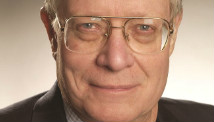CORAL GABLES, Fla. (AP) — With a steady din coming from the sea of orange behind the visitors' basket, No. 1 Duke had a tough time making a shot.
The Blue Devils went more than 8 minutes without a field goal in the first half Wednesday night, and a sellout became a blowout for No. 25 Miami, which delighted a boisterous crowd with a 90-63 victory.
The defeat was the third-worst ever for a No. 1 team. The last time Duke lost a regular-season game by a bigger margin was in January 1984.
"It wasn't demoralizing; they played better," Blue Devils guard Rasheed Sulaimon said. "I believe we have them on the schedule again."
"We expected them to be terrific, and we have to match terrific, and then you have a terrific game," Duke coach Mike Krzyzewski said. "What you had was a terrific win for them, but not a terrific game. We didn't hold our end of the bargain."
Miami (14-3, 5-0 Atlantic Coast Conference) beat a No. 1 team for the first time, taking control with a stunning 25-1 run midway through the opening half. The Blue Devils missed 13 consecutive shots despite numerous good looks, while four Hurricanes hit 3-pointers during the run that transformed a 14-13 deficit into a 38-15 lead.
Duke (16-2, 3-2) fell to 0-2 when playing on an opponent's court. The Blue Devils' other loss came at North Carolina State, a defeat that cost them the No. 1 ranking.
They regained the top spot this week but seemed rattled by the capacity crowd, only the 10th in 10 years at Miami's on-campus arena. Students began lining up for seats outside the arena almost 24 hours before tipoff, a rarity for the attendance-challenged Hurricanes.
"I don't know how you can sit outside for a basketball game for that long," Miami guard Durand Scott said. "That made me want to win for them even more."
The Hurricanes, who are alone atop the league standings, won their sixth consecutive game. They beat Duke for the second straight time — but only the fourth time in the 19-game series.
Miami had been 0-6 against No. 1 teams. Coach Jim Larranaga also beat a No. 1 team for the first time.
"This is a great memory," Larranaga said.
Scott scored a season-high 25 points for the Hurricanes, and Kenny Kadji added a season-high 22. Shane Larkin had 18 points, 10 rebounds and five assists, and Durham, N.C. native Julian Gamble had 10 rebounds and four blocked shots.
Miami senior center Reggie Johnson came off the bench in his first action since being sidelined with a broken left thumb Dec. 18. He had two points and five rebounds in 16 minutes.
The Hurricanes, ranked this week for the first time in three years, improved to 8-0 at home.
Seth Curry, Tyler Thornton and Quinn Cook went a combined 1 for 29 for the Blue Devils, who shot a season-low 30 percent. Sulaimon led them with 16 points.
Duke went 4 for 23 from 3-point range, while Miami went 9 for 19 and shot 57 percent overall.
"Especially in the first couple of minutes, we got a lot of great shots," Blue Devils forward Mason Plumlee said. "You're going to miss some, but you have to keep shooting. The biggest mistake you can make is questioning your shot because you're missing open shots."
Kadji made two 3s during the Hurricanes' first-half spurt, then capped it with a three-point play. Duke shot 22 percent in the first half, including two for 11 on 3-pointers, and trailed 42-19 at halftime.
There was no letup by the Hurricanes to start the second half. They scored the first seven points for a shocking 49-19 lead, and punctuated the drubbing with five dunks in the final 10 minutes.
"Some teams come out in the second half flat and think they have the game won," Larkin said, "but we stayed with it with the same energy in the second half. We played great the whole game."
A Duke mistake — one in a long series — early in the second half had Krzyzewski red-faced and on the court, screaming at his team. But he couldn't inspire a turnaround.
"Over-rated," fans chanted with 3 minutes left. When the game ended, they poured onto the court and mobbed their team.
"The crowd I'm sure helped them some," Krzyzewski said. "But they didn't need much help."
Back in North Carolina, fans of the Tar Heels savored the loss by their rivals. When the final score of the Duke game was posted on the video board at the North Carolina-Georgia Tech game, students chanted, "Go to hell, Duke!"
___
AP Sports Writer Joedy McCreary in Chapel Hill, N.C., contributed to this report.

